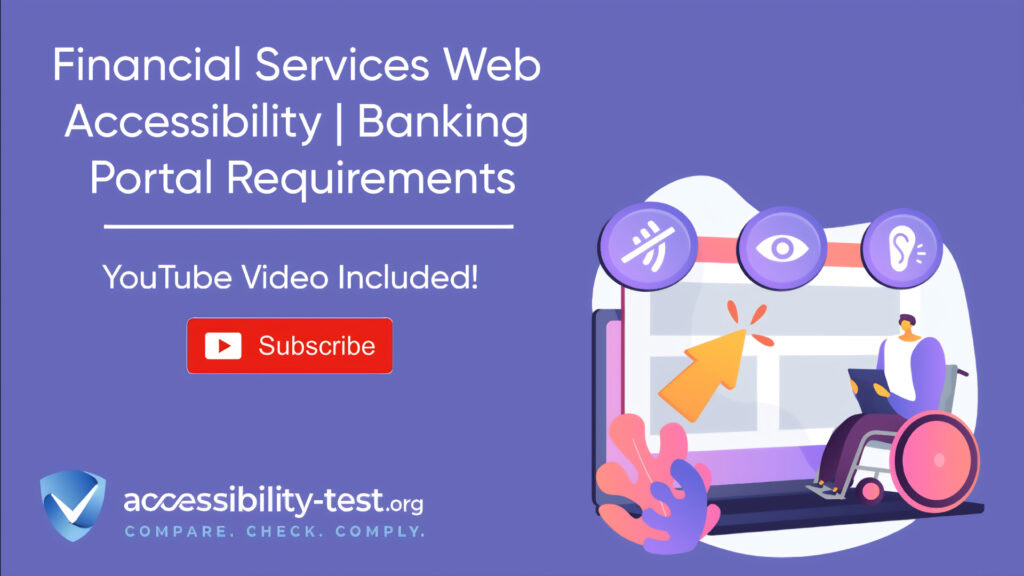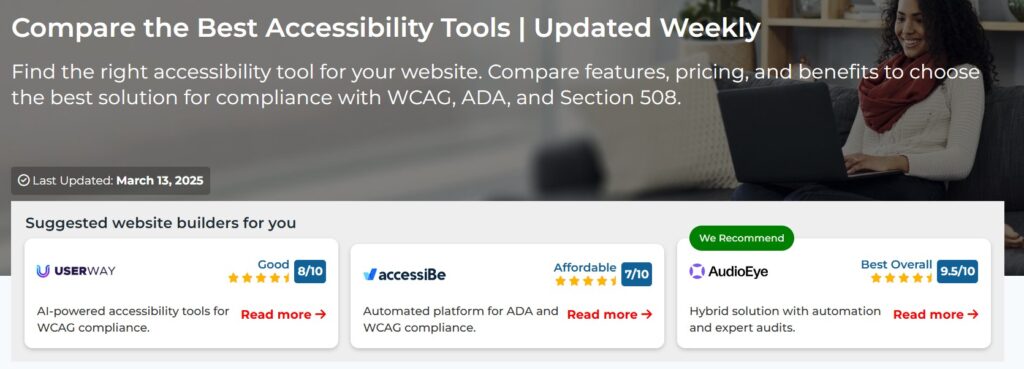
Financial Services Web Accessibility – Banking Portal Requirements
Online banking has transformed how people manage their finances, offering convenience and 24/7 access to accounts. However, for millions of users with disabilities, banking websites often present significant barriers instead of solutions. When banking portals aren’t designed with accessibility in mind, everyday financial tasks become frustrating challenges.
Research shows that households with disabilities are twice as likely to be unbanked compared to those without disabilities. This disparity stems partly from inaccessible digital banking interfaces that prevent independent financial management. Beyond ethical considerations, inaccessible banking portals also expose financial institutions to legal risks under regulations like the Americans with Disabilities Act (ADA) and the European Accessibility Act (EAA).
This article examines specific accessibility requirements for banking portals, practical implementation strategies for WCAG compliance, and testing methodologies to ensure all users can access financial services equally. From secure login processes to transaction workflows, we’ll explore how to create banking experiences that work for everyone.
Core Accessibility Requirements for Banking Platforms
Banking websites face unique accessibility challenges due to their combination of complex functionality, security requirements, and information-dense interfaces. Creating accessible banking platforms requires attention to both general accessibility principles and finance-specific considerations.
Financial institutions must ensure their digital platforms meet these essential requirements:
- Clear information architecture: Banking interfaces should organize information logically, with consistent navigation and predictable layouts that help users understand where they are in the system.
- Keyboard functionality: All banking operations, from checking balances to transferring funds, must be fully operable using keyboard-only navigation.
- Screen reader compatibility: Banking content and interactive elements must be properly labeled and structured to work with assistive technologies.
- Readable content: Financial information should use plain language, appropriate font sizes, and sufficient color contrast to support users with cognitive or visual impairments.
- Error prevention and recovery: Given the critical nature of financial transactions, banking sites need robust error handling that helps users avoid mistakes and easily recover when they occur.
Banking portals that implement these core requirements create foundations for accessible financial experiences while reducing compliance risks.
WCAG Compliance for Financial Transactions
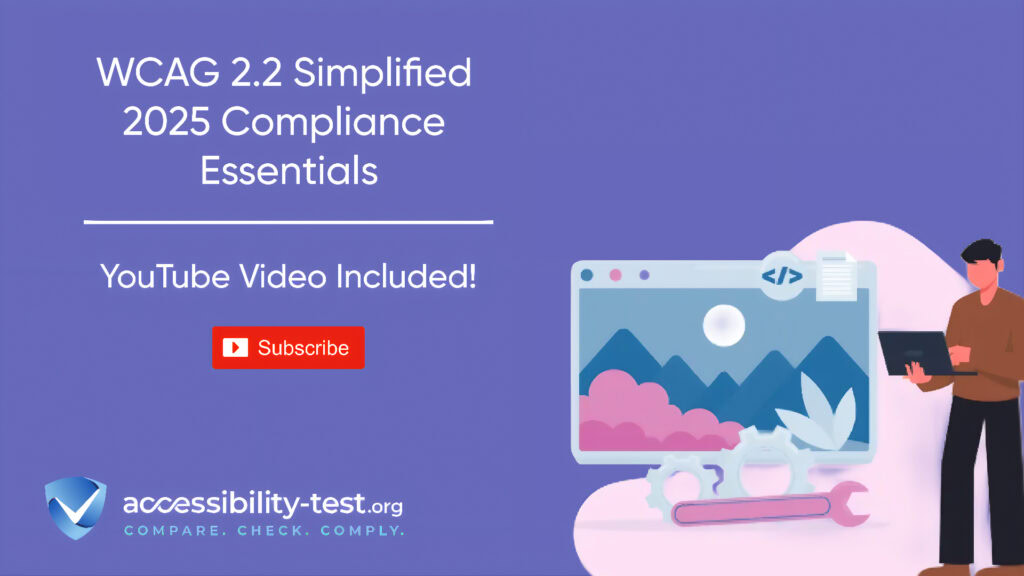
Financial transactions represent the most critical functions of banking portals, requiring special attention to accessibility. The Web Content Accessibility Guidelines (WCAG) 2.2 includes several success criteria particularly relevant to transaction processes.
WCAG 2.2 adds new requirements that directly impact financial transaction interfaces. For example, the guidelines now specify that interactive elements like buttons should have a minimum touch target size of 44 x 44 pixels. This improvement helps users with motor impairments accurately select transaction options without accidental activations.
For financial transaction forms, WCAG 2.1 Success Criterion 3.3.1 (Error Identification) requires that input errors be clearly identified and described to users. In banking contexts, this means clearly indicating which fields contain errors during payment or transfer setups. For instance, rather than a generic “form contains errors” message, accessible error messages should specifically state “The account number field contains invalid characters.”
Success Criterion 3.3.4 (Error Prevention) is especially critical for financial transactions. For actions that involve legal or financial commitments, users must be able to:
- Review transaction details before submission
- Correct any errors they identify
- Receive explicit confirmation for irreversible actions
Banking portals should implement these features while maintaining proper focus management, ensuring that screen reader users can navigate through transaction flows without losing context.
Time limits during transactions present another challenge. WCAG Success Criterion 2.2.1 (Timing Adjustable) requires that users can extend time limits when completing complex forms. Banking sessions often timeout for security reasons, but accessible implementations should:
- Warn users before timing out
- Provide options to extend the session
- Preserve entered data when possible
Testing transaction flows should include scenarios with assistive technologies to verify that all steps are perceivable and operable. This means checking that form labels, error messages, and confirmation notices are properly announced by screen readers.
Secure Authentication Accessibility
Authentication systems represent a critical intersection of security and accessibility in banking portals. Multi-factor authentication (MFA) adds security but can create barriers for users with disabilities if not thoughtfully implemented.
Banks must strike a balance between robust security measures and inclusive access. The Australian Banking Association recommends providing “alternative accessible means of identification, authentication, and transaction to meet accessibility requirements of customers”. This might include:
- Biometric alternatives (fingerprint, facial recognition, voice)
- Text-based one-time codes as alternatives to app-based authenticators
- Longer timeout periods for entering verification codes
- Option for trusted device remembrance to reduce authentication frequency
Login forms should follow accessibility best practices including:
- Proper labeling of all input fields
- Clear error messages for unsuccessful login attempts
- No CAPTCHA or alternatives with accessible options
- Support for password managers and autofill
WCAG 2.2 introduced a new success criterion (3.3.7 Accessible Authentication) that specifically addresses authentication barriers. This criterion requires that cognitive function tests (like remembering passwords) have alternatives or that authentication does not rely on memorization or transcription of information.
For banking portals, this might mean implementing:
- Biometric login options when available
- Single sign-on with accessible authentication providers
- Secure password manager integration
- Clear and accessible account recovery processes
One approach mentioned in the Australian Banking Association guidelines is offering different authentication methods based on user needs: “Provide alternative accessible means of identification, authentication, and transaction to meet accessibility requirements of customers”. This flexibility helps ensure all users can access their accounts regardless of their abilities.
Accessible Banking Interface Components
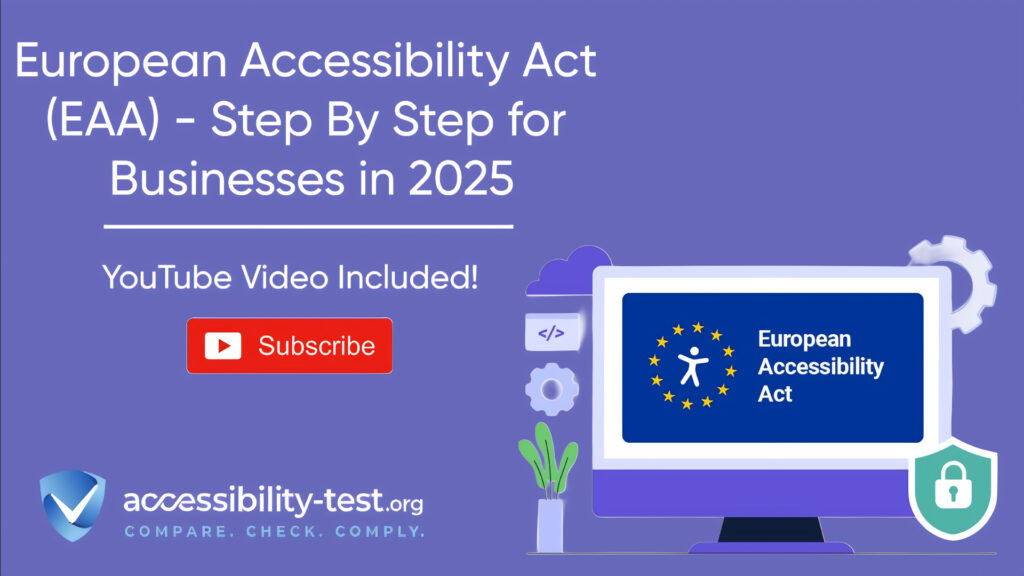
Banking interfaces contain specialized components that require specific accessibility considerations. From account dashboards to transaction tables and financial charts, each element needs thoughtful implementation to ensure usability for all customers.
Screen Reader-Compatible Account Dashboards
Account dashboards serve as command centers for online banking, displaying account balances, recent activities, and quick action links. Making these dashboards screen reader-compatible requires attention to structure, labeling, and interaction design.
Dashboard elements should include proper semantic HTML and ARIA attributes to communicate their purpose to assistive technologies. For example, account balance sections should use appropriate heading levels to create a logical document structure. Screen reader users should be able to navigate directly to key dashboard sections using landmark regions.
When implementing customizable dashboards, ensure that preference controls are accessible. For example, the MyOCCU Online banking interface allows users to customize their dashboard by hiding or showing specific accounts and changing display preferences, but these controls must be operable with keyboards and screen readers.
A well-structured dashboard should:
- Use proper heading hierarchy to organize content
- Implement HTML5 landmark regions (header, main, nav) for easy navigation
- Provide descriptive alt text for all informational images
- Ensure all interactive elements have accessible names
- Maintain focus management when refreshing account data
Testing dashboard accessibility should verify that screen reader users can:
- Hear account names and balances correctly
- Navigate between different dashboard sections efficiently
- Access quick action links and menu items
- Understand the relationship between data elements
As noted in the screen reader testing protocols, “When testing navigation, verify that keyboard focus moves in a logical order through the page. Users should be able to tab through interactive elements in a sequence that matches the visual layout of the page”.
Accessible Transaction History Tables

Transaction history tables present complex financial data that must be navigable and understandable for all users. Screen reader users rely on proper table markup to understand the relationships between data cells.
For accessible transaction tables:
- Include proper table markup with <table>, <tr>, <th>, and <td> elements
- Add proper scope attributes to header cells (scope=”col” or scope=”row”)
- Provide table captions that describe the table’s purpose
- Implement column headers that clearly identify data types (date, description, amount)
- Avoid merging cells when possible to maintain a simple structure
When transaction tables include interactive elements like “view details” links, these must be properly labeled to indicate their purpose and the specific transaction they relate to. For instance, rather than multiple generic “details” links, each should be uniquely identified: “View details of $50 payment to Electric Company on March 15”.
For tables with many rows, implementing accessible pagination or infinite scrolling requires special attention. When new transactions load dynamically, screen reader users should be notified of the updated content through ARIA live regions. Additionally, sorting and filtering controls must be keyboard accessible and have clear, descriptive labels.
Color coding often appears in transaction tables (red for debits, green for credits), but should never be the only means of distinguishing transaction types. Text indicators like “Deposit” or “Withdrawal” should accompany color coding to ensure users with color vision deficiencies can understand the information.
Keyboard-Navigable Transfer Interfaces
Money transfer interfaces are critical banking functions that must work effectively for keyboard-only users. These interfaces typically involve multiple form fields, dropdown menus, and confirmation steps.
Implementing keyboard-navigable transfer forms requires:
- Logical tab order that follows the visual flow of the form
- Clear focus indicators that show which element is currently selected
- Keyboard-accessible dropdowns for selecting accounts or recipients
- No keyboard traps in any part of the process
- Focus management that guides users through multi-step processes
The ARIA design patterns document notes that “the main goal is to standardize keyboard interactions by making keyboard navigation identical to a desktop application”. This means transfer interfaces should use consistent keyboard patterns, such as:
- Tab to navigate between form controls
- Enter to activate buttons
- Space to toggle checkboxes
- Arrow keys to navigate within dropdown options
For complex transfer interfaces, consider implementing:
- Skip links to bypass repetitive navigation
- Keyboard shortcuts for common actions (with proper documentation)
- Focus management that returns focus to logical locations after actions
Testing keyboard navigation should verify that all functions can be completed without a mouse. For instance, “When documenting violations, include notes about user impact beyond technical specifications. Explain how the issue affects people with specific disabilities in concrete terms”. Rather than simply noting “keyboard navigation fails,” document specifically how keyboard users would be unable to complete money transfers.
ARIA Implementation for Financial Charts
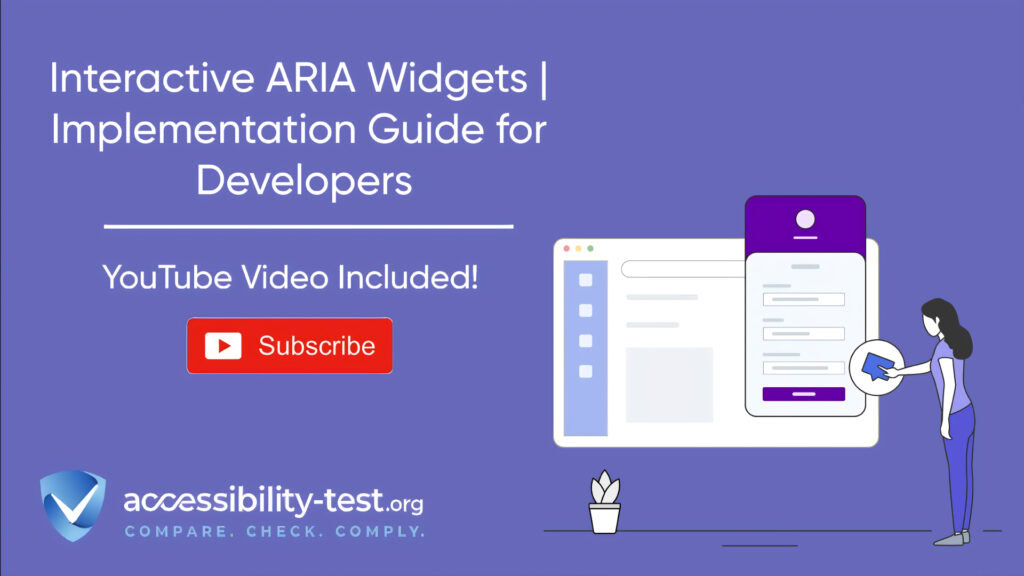
Financial charts and graphs present unique accessibility challenges since they convey complex data visually. Proper ARIA implementation helps make these visual elements meaningful to screen reader users.
For accessible financial charts:
- Provide text alternatives that summarize key insights from the chart
- Use ARIA roles to identify the chart type (e.g., role=”img” with detailed alt text)
- Consider interactive data tables as alternatives to visual charts
- Implement keyboard controls for interactive charts
- Ensure sufficient color contrast and avoid relying solely on color to convey information
When implementing complex charts like stock price histories or portfolio performance graphs, consider multiple ways to make the data accessible:
- Text summaries of key trends and insights
- Data tables with the same information in structured format
- Enhanced descriptions for significant data points (highest/lowest values, major changes)
ARIA attributes can enhance chart accessibility by providing context and structure. For example:
- aria-label provides a concise description of the chart
- aria-describedby links to more detailed explanations
- aria-live regions announce dynamic updates to chart data
For interactive charts, ensure that keyboard users can access all functionality, including:
- Zooming in/out of chart data
- Selecting specific data points for details
- Changing time ranges or other display parameters
- Exporting data in accessible formats
When testing chart accessibility, verify that screen reader users can understand key financial information without seeing the visual representation. As noted in the screen reader testing protocols, “While automated tools can identify many potential accessibility issues, they cannot replace manual screen reader testing”.
Specialized Financial Accessibility Features
Beyond standard banking functions, financial institutions offer specialized services with unique accessibility requirements. Features like loan applications and advanced security measures need tailored approaches to ensure accessibility.
Accessible Loan Application Workflows
Loan applications typically involve complex multi-step processes with extensive form-filling and document uploads. Making these workflows accessible requires thoughtful design and implementation.
Key considerations for accessible loan applications include:
- Clear progress indicators that work with screen readers
- Logical segmentation of the application into manageable steps
- Persistent save functionality to prevent data loss
- Extended session timeouts for complex applications
- Clear error prevention and correction mechanisms
According to remediation planning best practices, loan applications should include “notes about user impact beyond technical specifications”. For example, if timeouts are too short, explain how this “prevents screen reader users from completing loan applications, creating frustration and potential abandonment”.
Form fields in loan applications require clear labels and instructions. As noted in the Australian Banking Association guidelines, forms should “provide clear instructions and offer validation and error messages that are perceivable and understandable”. This means:
- Indicating required fields consistently
- Explaining expected formats (dates, account numbers, etc.)
- Providing immediate validation when possible
- Ensuring error messages are linked programmatically to their fields
Document upload sections need special attention. Instructions should clearly explain:
- Acceptable file formats
- File size limitations
- Alternative methods for submitting documents if online upload is challenging
- How to verify successful uploads
For loan calculators and affordability tools, ensure that all interactive elements work with keyboards and screen readers. Results should be announced appropriately, and any visualizations should have text alternatives.
After submission, application status updates should be accessible through:
- Screen reader-compatible status pages
- Accessible email notifications
- Text message alerts when appropriate
- Clear next steps and timelines
Multi-Factor Authentication for Users with Disabilities

Banks increasingly implement multi-factor authentication (MFA) to protect accounts, but these systems must provide accessible options for users with different disabilities.
The Australian Banking Association recommends “striking an appropriate balance between robust security measures and inclusive access”. This means offering multiple authentication methods to accommodate different needs:
- For users with visual impairments:
- Screen reader-compatible SMS codes
- Accessible authenticator apps
- Phone call verification options
- Biometric alternatives (fingerprint, face ID)
- For users with motor impairments:
- Extended timeouts for entering verification codes
- Voice-activated authentication options
- Simplified input methods for verification codes
- Options that don’t require precise movements
- For users with cognitive impairments:
- Clear, simple instructions
- Consistent authentication processes
- Reduced cognitive load through biometrics
- Helper supports where appropriate
When implementing biometric authentication, design solutions to “maximize accessibility for people with disability”. This means considering that:
- Not all users can provide fingerprints (due to skin conditions or amputation)
- Facial recognition should work with diverse appearances and assistive devices
- Voice recognition should accommodate speech impairments
- Alternative methods should always be available
Testing authentication flows should verify compatibility with assistive technologies. As recommended in the Australian Banking Association guidelines, banks should “test compatibility with assistive technologies, including when updates are made to check ongoing compatibility”.
Authentication error messages should be clear and helpful. Rather than vague messages like “authentication failed,” provide specific guidance: “We couldn’t verify your identity with this method. Try an alternative method or contact support for assistance.”
Testing Banking Portal Accessibility
Effective accessibility testing combines automated checks with manual testing and user feedback. For banking portals, testing should focus on critical user journeys like logging in, viewing accounts, and making transactions.
Automated vs. Manual Testing Approaches

Automated testing tools can identify many technical accessibility issues, but they have limitations in assessing actual usability. As noted in the screen reader testing protocols, “Automated tools excel at finding technical violations like missing alt text or improper heading structure, but they cannot evaluate the actual user experience”.
For banking portals, implement a balanced testing approach:
- Use automated tools to scan for basic WCAG violations
- Conduct manual keyboard navigation testing of all functions
- Perform screen reader testing of critical user journeys
- Engage users with disabilities for usability feedback
When documenting accessibility issues, include specific information for developers. According to remediation planning best practices, each issue should include:
- A precise description of the problem and which WCAG success criteria it violates
- Steps to reproduce the issue
- Code snippets and screenshots
- Browser and assistive technology information
- Suggested fixes with example code
Banking-Specific Accessibility Test Cases
Develop test cases specific to banking functions, including:
- Account Dashboard Tests:
- Can users navigate to and understand account balances using a screen reader?
- Are transaction categories distinguishable without relying on color alone?
- Can keyboard users access all dashboard features?
- Transaction Flow Tests:
- Can users complete money transfers using only keyboard navigation?
- Are error messages properly announced by screen readers?
- Do confirmation dialogs maintain proper focus management?
- Authentication Tests:
- Are all authentication methods usable with various disabilities?
- Can users recover accounts without relying on visual CAPTCHA?
- Are timeout warnings properly announced and extendable?
- Form Accessibility Tests:
- Are all form fields properly labeled?
- Are error messages linked programmatically to their fields?
- Can users navigate complex forms using keyboard alone?
According to screen reader testing protocols, “Test landmark navigation by using screen reader shortcuts” and “Count the number of keystrokes required to reach important content using landmark navigation compared to sequential navigation”.
Implementing Accessibility Feedback Channels
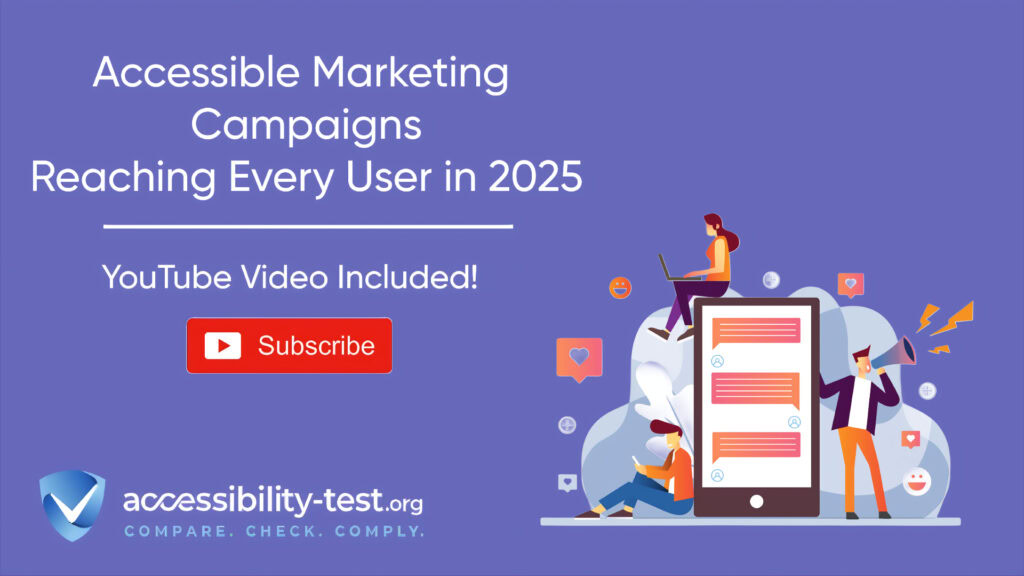
Financial institutions should establish clear channels for users to report accessibility barriers. This helps identify issues that automated testing might miss and demonstrates commitment to continuous improvement.
Effective feedback channels include:
- Accessible “Report an Accessibility Issue” forms
- Direct contact options for accessibility support
- User testing sessions with customers who have disabilities
- Regular accessibility audits by third-party experts
When accessibility issues are reported, teams should follow a structured remediation process as outlined in the remediation planning guidelines:
- Document the issue thoroughly
- Prioritize based on impact and compliance requirements
- Develop and implement solutions
- Validate the fix with appropriate testing
- Document the resolution
Legal Compliance and Banking Accessibility Standards
Banking portals must comply with various accessibility laws and standards. Understanding these requirements helps financial institutions prioritize accessibility efforts.
Financial Industry Accessibility Regulations
Several legal frameworks impact banking accessibility requirements:
Americans with Disabilities Act (ADA): Courts have consistently ruled that the ADA applies to banking websites and mobile apps, requiring them to be accessible to people with disabilities.
European Accessibility Act (EAA): Coming into full effect by 2025, the EAA specifically includes banking services among sectors required to meet accessibility standards.
Section 508: While primarily applicable to federal agencies, Section 508 standards often influence accessibility requirements for financial institutions that work with government entities.
The Department of Justice has indicated that websites, including banking portals, must accommodate people with disabilities, referencing WCAG 2.0 Level AA as an appropriate standard.
WCAG Conformance Levels for Banking
WCAG provides three conformance levels (A, AA, AAA), with Level AA generally considered the target for banking portals.
Key Level AA requirements particularly relevant to banking include:
- Color contrast ratios of at least 4.5:1 for normal text
- Multiple ways to find content within the website
- Consistent navigation across the site
- Error suggestion and prevention
- Input purpose identification for form fields
The WCAG 2.2 update introduced several new success criteria that impact banking portals:
- Accessible authentication requirements
- Focus appearance standards
- Improved requirements for target size on touch interfaces
When prioritizing accessibility improvements, banks should focus first on Level A issues, which represent the most significant barriers. As noted in remediation planning guidance, “WCAG conformance levels provide a built-in prioritization framework… Issues at this level should be addressed first as they create the most significant barriers for users with disabilities”.
Global Banking Accessibility Initiatives
Financial institutions worldwide are increasingly recognizing accessibility as a priority. Several banking associations have developed accessibility guidelines:
Australian Banking Association: The Accessibility and Inclusion Principles for Banking Services provide specific guidance for making banking services accessible across digital and physical channels.
European Banking Authority: The EBA has issued guidelines on ICT and security risk management that include accessibility considerations for banking services.
Worldwide Web Consortium (W3C): While not banking-specific, the W3C’s work on WCAG provides the technical foundation for accessible banking portals.
These initiatives highlight how accessibility is becoming a standard business practice in banking rather than merely a compliance exercise.
Implementation Strategies for Accessible Banking
Creating accessible banking portals requires strategic planning and implementation. Financial institutions can follow these approaches to develop more inclusive services.
Prioritizing High-Impact Accessibility Improvements
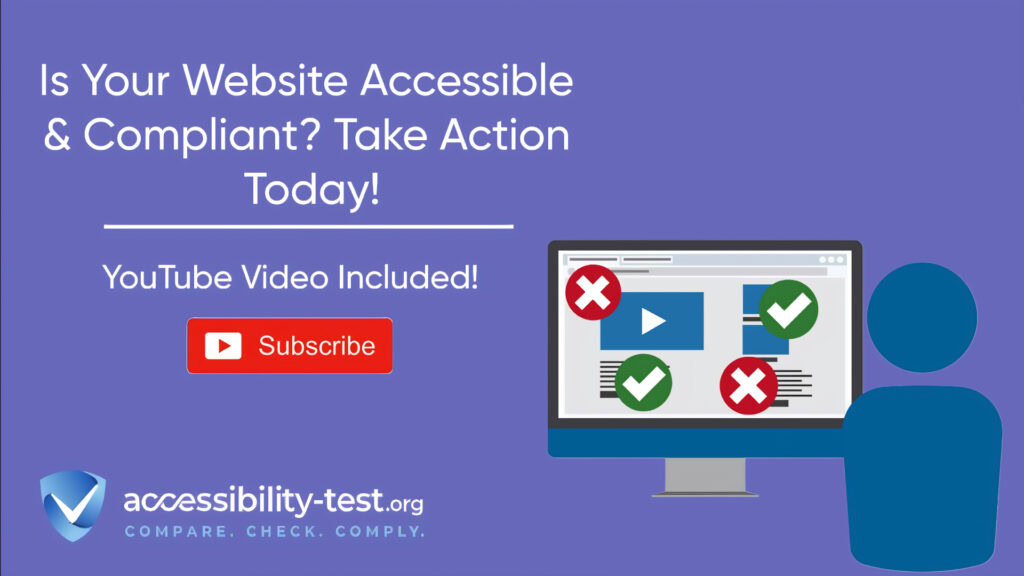
Not all accessibility issues have equal impact. Banks should prioritize fixes using an impact-effort matrix as described in remediation planning guidance.
High-impact, low-effort improvements might include:
- Adding proper alt text to images
- Fixing heading structure
- Improving color contrast
- Adding proper form labels
- Ensuring keyboard functionality for main navigation
High-impact, high-effort improvements typically involve:
- Redesigning authentication processes
- Rebuilding transaction workflows
- Implementing accessible charts and data tables
- Restructuring account dashboards
When prioritizing issues affecting core banking functions, consider both user impact and compliance risk. As noted in remediation planning guidance: “Issues affecting core user journeys or critical functionality should be prioritized over problems in rarely used features. For example, fixing inaccessible checkout processes would take precedence over addressing issues in seldom-visited help pages”.
Balancing Security and Accessibility Requirements
Banking portals face unique challenges in balancing robust security with accessibility. Some strategies for achieving this balance include:
- Accessible Multi-Factor Authentication: Offer multiple authentication methods to accommodate different disabilities while maintaining security.
- Extended Timeouts with Warnings: Implement longer session timeouts for accessibility purposes, with clear warnings before sessions expire.
- Progressive Security Enhancement: Apply stronger security measures for higher-risk transactions while keeping basic account functions more accessible.
- Biometric Options: Implement accessible biometric authentication as alternatives to complex passwords or one-time codes.
The Australian Banking Association recommends that banks “strike an appropriate balance between robust security measures and inclusive access”. This might mean providing alternative authentication methods for users who cannot use standard approaches.
User Testing with People with Disabilities
Real user testing provides insights that automated testing cannot. Banks should engage people with various disabilities to test their online portals.
Effective user testing includes:
- Recruiting participants with diverse disabilities
- Testing critical user journeys like account access and money transfers
- Observing actual assistive technology usage
- Collecting structured feedback about barriers encountered
- Implementing improvements based on feedback
As noted in the screen reader testing protocols, testing should “verify that users can complete forms efficiently and recover from errors”. This includes checking that users can understand error messages, correct mistakes, and successfully complete transactions.
Future Trends in Banking Accessibility
Financial services technology continues to evolve, and accessibility must evolve alongside it. Several emerging trends will shape the future of banking accessibility.
Artificial Intelligence and Banking Accessibility
AI is transforming banking services, from chatbots to fraud detection. Financial institutions must ensure these technologies remain accessible to all users.
The Australian Banking Association guidelines specifically address AI technology, recommending that banks:
- Design AI chatbots to be accessible through screen readers
- Provide alternative communication methods alongside AI-powered services
- Ensure AI interfaces support keyboard navigation
- Test AI systems with assistive technologies
As banking portals increasingly implement AI-driven features, accessibility considerations should be built into development from the start rather than added afterward.
Mobile Banking Accessibility Innovations
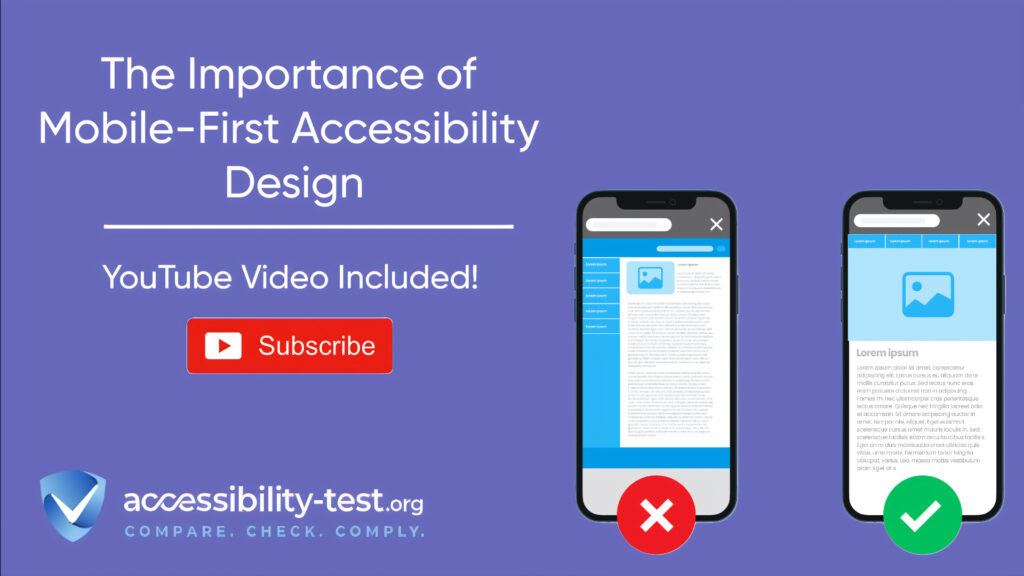
Mobile banking continues to grow in popularity, requiring specific accessibility approaches for smaller screens and touch interfaces.
The Australian Banking Association guidelines recommend several mobile accessibility practices:
- Formatting text for legibility with appropriate font size
- Supporting font size changes to meet user preferences
- Providing descriptive alternative text for all visual elements
- Ensuring color contrast meets WCAG requirements
- Designing interfaces to accommodate various input methods
Emerging technologies like voice banking and gesture control should be developed with accessibility in mind, ensuring they work for users with various disabilities.
Banking Platform Personalization for Accessibility
Customizable interfaces allow users to tailor banking experiences to their specific needs. Some banking platforms already offer dashboard customization, but future implementations could expand these options to include:
- Simplified interfaces for users with cognitive impairments
- High-contrast modes for users with low vision
- Reduced motion settings for users with vestibular disorders
- Text-heavy alternatives to chart-based displays
- Custom timeout settings based on user preferences
These personalization options benefit all users while specifically addressing accessibility needs without creating separate “accessible versions” that might be poorly maintained.
Using Automated Tools for Quick Insights (Accessibility-Test.org Scanner)
Automated testing tools provide a fast way to identify many common accessibility issues. They can quickly scan your website and point out problems that might be difficult for people with disabilities to overcome.
Visit Our Tools Comparison Page!

Run a FREE scan to check compliance and get recommendations to reduce risks of lawsuits
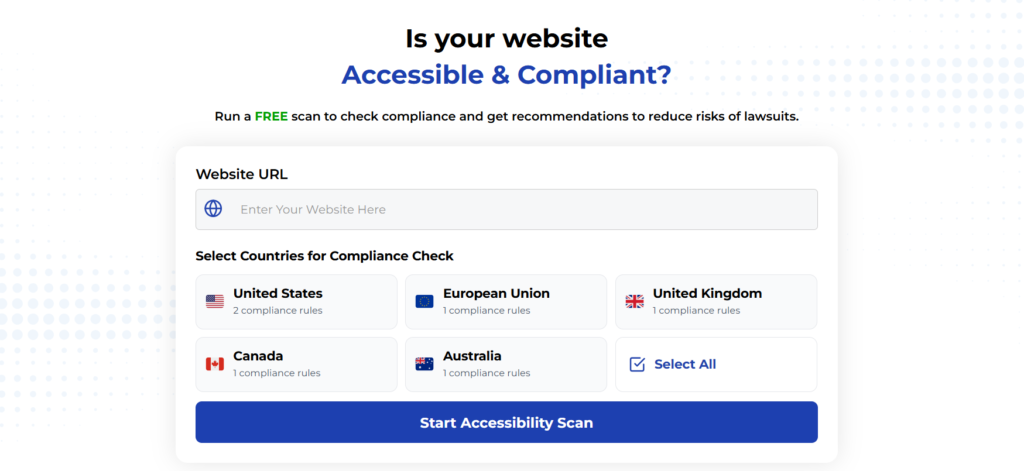
Creating accessible banking portals is both a legal requirement and a business opportunity. By implementing accessibility features throughout the customer journey—from login to transactions to account management—financial institutions can serve all customers better while reducing legal risks.
Key takeaways include:
- Implement WCAG 2.2 standards, focusing on Level AA compliance
- Pay special attention to authentication processes and transaction flows
- Ensure all banking components work with keyboards and screen readers
- Test with real users who have disabilities
- Balance security needs with accessibility requirements
- Document accessibility features clearly for customers
The financial services industry has made progress in digital accessibility, but many banking portals still present barriers to users with disabilities. By following the requirements and strategies outlined in this article, banks can create truly inclusive digital experiences that work for everyone.
Run a FREE scan to check compliance and get recommendations to reduce risks of lawsuits.



